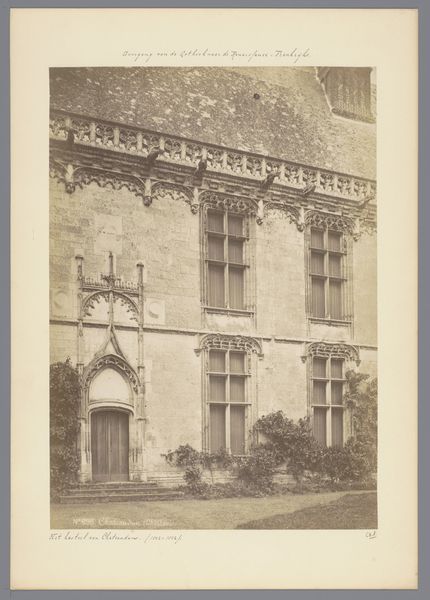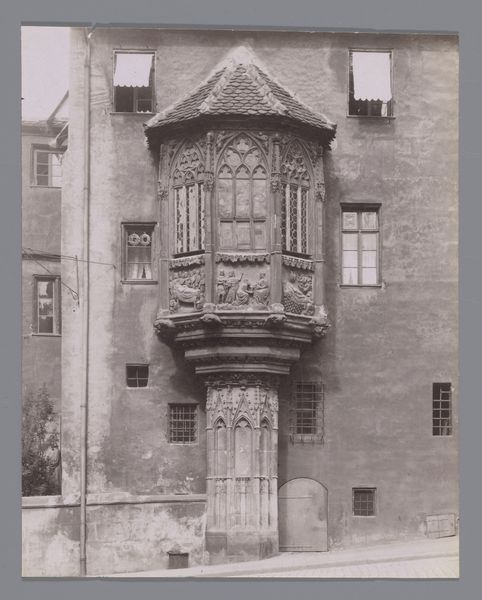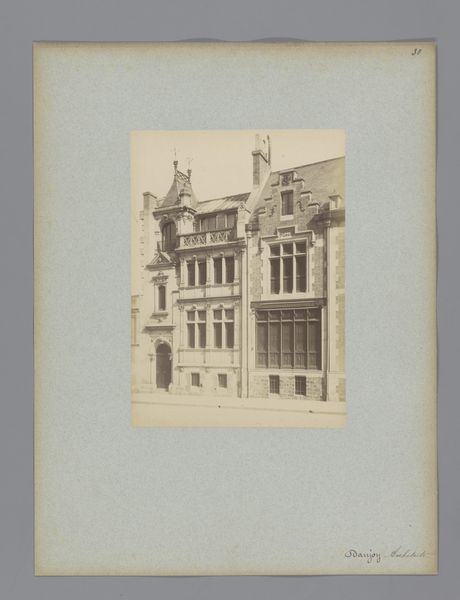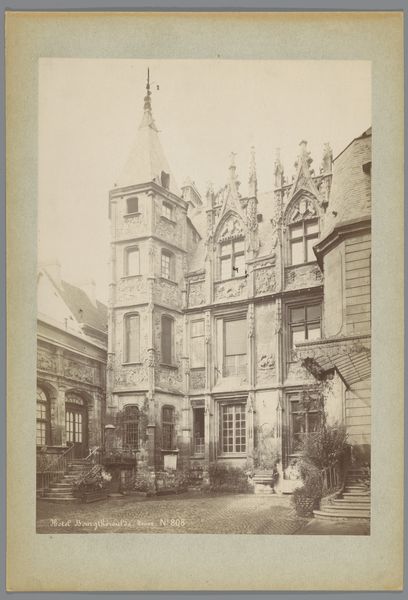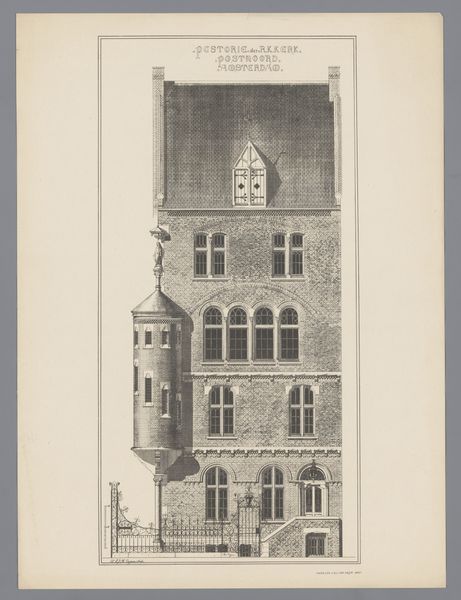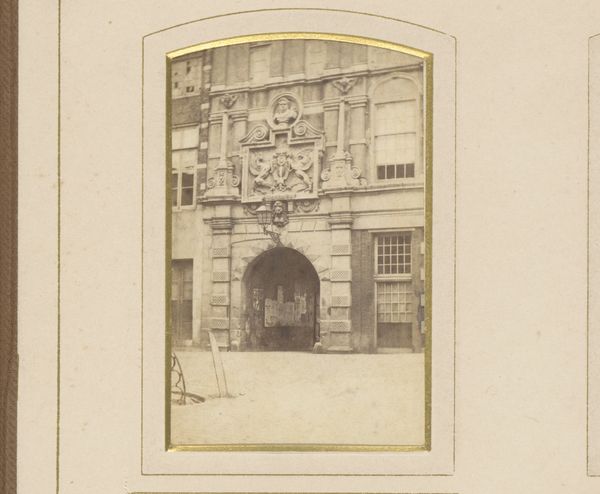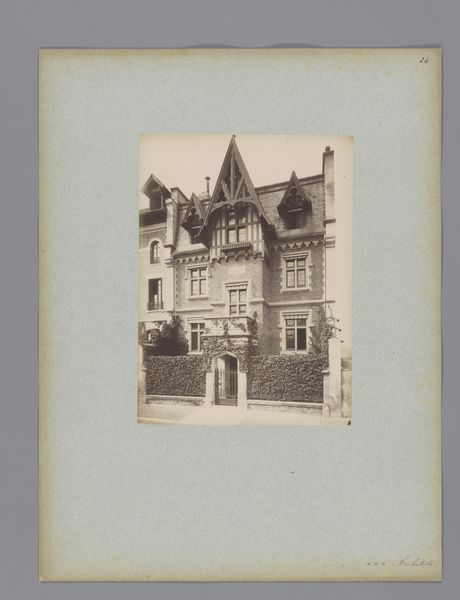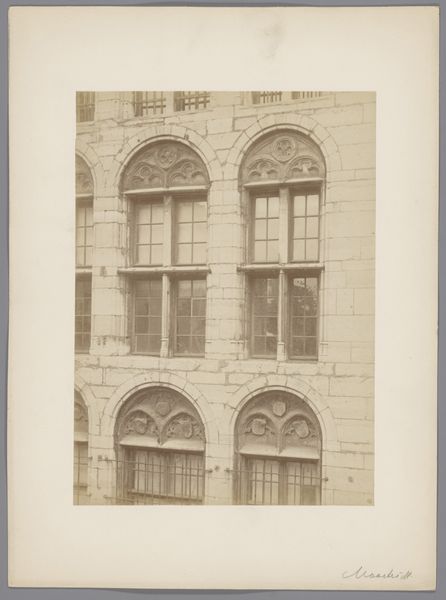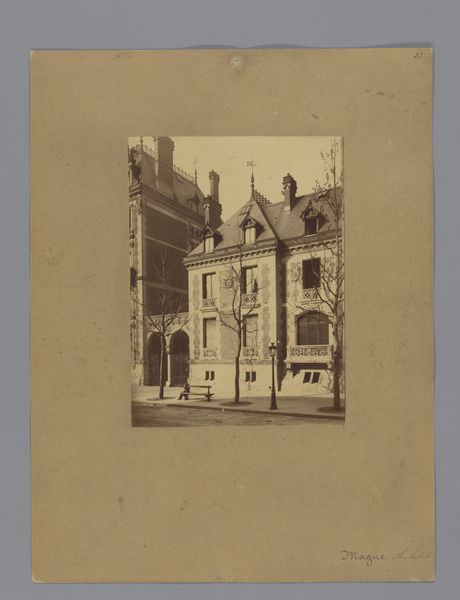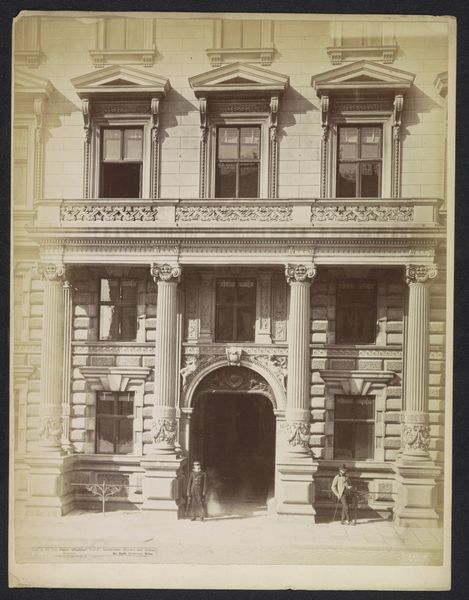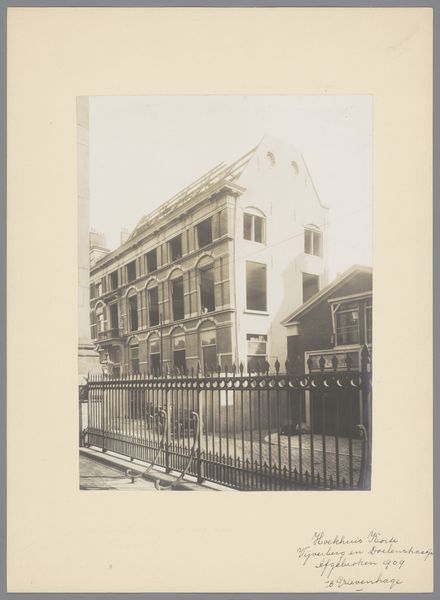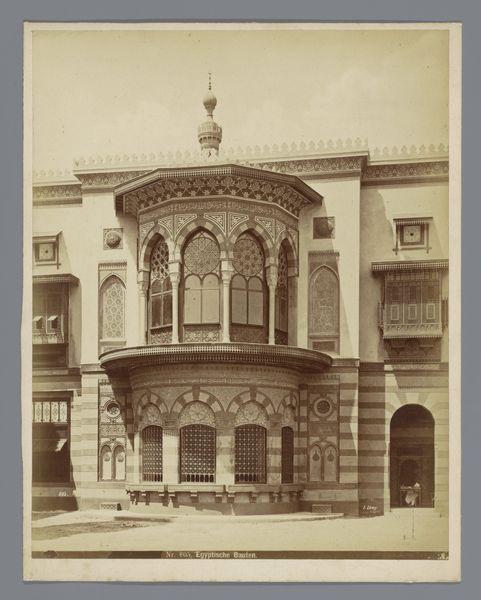
photography, gelatin-silver-print, architecture
#
photography
#
orientalism
#
gelatin-silver-print
#
cityscape
#
architecture
#
realism
Dimensions: height 257 mm, width 207 mm, height 293 mm, width 207 mm
Copyright: Rijks Museum: Open Domain
Curator: Welcome. We are looking at a photograph entitled "Nuremberg, Choir at Sebalder Pfarrhaus." It's a gelatin-silver print dating from between 1850 and 1900, created by Johannes Hahn. What strikes you most when you see this image? Editor: A kind of faded grandeur. The light's so gentle it almost feels like a memory. It's got this almost architectural daydream vibe, this incredible oriel seems to hover instead of jutting out. It makes me wonder about those intricate carvings, what stories are whispered in stone? Curator: Indeed. These oriels, attached to the Sebalder Pfarrhaus or rectory, would have been significant markers of status. In this era, photography began cataloging and preserving such historic architecture. This type of architectural detail often symbolized power and affluence. How do you interpret that now? Editor: Hmmm, power and affluence… Now? Well, now I see that little nook, that oriel, and imagine a quiet rebel scribbling poems under its shadow, defying all that status and expectation! Though maybe I romanticize rebellion a little. Curator: Possibly. But your reaction touches on a key shift of this era: increased literacy. Now, what impact does the photographer, Hahn, have on our reading of it? Editor: Well, through the lens, Hahn captures the rigid, architectural aesthetic but, at the same time, seems to soften the edges. It is a rendering of real-world construction but he subtly makes the buildings seem less like static objects, more like silent actors. Maybe. It seems the buildings could start breathing if you stare at the image long enough. Curator: Hahn documented numerous sites throughout the Nuremberg area, offering an insight into how the public interacted with images of their cities. What's really captivating about the photograph for me is its preservation of detail, down to the textures on the façade, which allows for intense scrutiny of building styles in the region. Editor: Looking closer, yes! The image rewards attention. Perhaps that’s what great art is… demanding a moment, maybe even an unexpected one. To consider, to be surprised and maybe to wonder? I see the image as capturing both a particular moment and speaking to enduring structures of power and artistic interpretation. What I originally considered 'faded grandeur' now represents its preservation. Curator: Yes. Its enduring impact. Thank you for that insight.
Comments
No comments
Be the first to comment and join the conversation on the ultimate creative platform.
